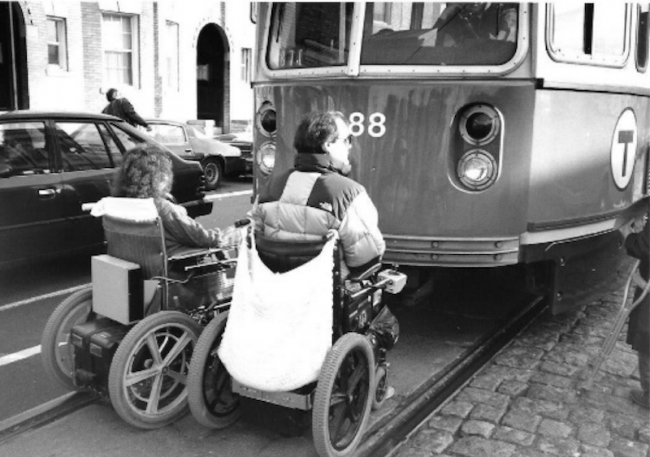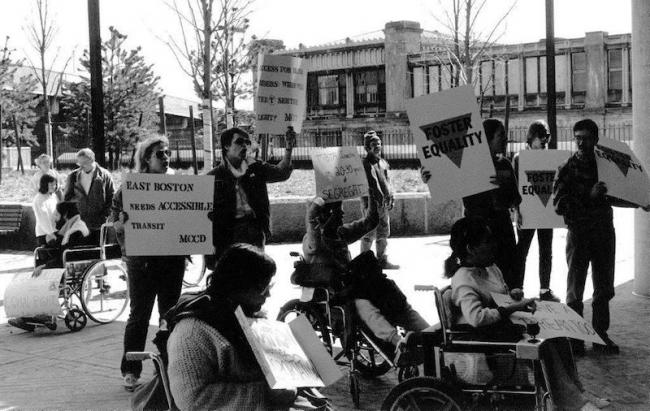History of Accessibility and the Impact of Daniels-Finegold Settlement Agreement
Early Activism
As recently as the 1970s, access to public transit for people with disabilities wasn’t guaranteed, and in many places did not exist at all.
Decades of groundbreaking advocacy from disability rights groups like ADAPT, whose members blocked Chicago and Denver bus routes with their bodies, paved the way for cities like Boston to make significant progress in accessible transit.
The Rehabilitation Act of 1973 required that any programs or services funded by the federal government be made accessible. In 1990, the Americans with Disabilities Act (ADA) significantly expanded on the Rehabilitation Act's protection of the rights of people with disabilities, and changed the way cities treated public transit accessibility.
The MBTA's response to the ADA included purchasing a fleet of wheelchair-accessible buses and creating an ADA-compliant Key Station Plan to outline how the agency would make popular subway and Commuter Rail routes accessible.
The Daniels-Finegold Settlement Agreement
Despite early progress, by the 2000s, riders with disabilities still could not safely or reliably access key MBTA services, even though accessibility was required under both federal and state laws.
At the time, studies found that many MBTA elevators at busy stations were often out of service. Furthermore, bus operators weren't always boarding riders with disabilities, either by choice or because accessibility equipment wasn't working.
In 2002, a group of 11 riders and the Boston Center for Independent Living (BCIL), represented by Greater Boston Legal Services, filed Joanne Daniels-Finegold, et al. v. Massachusetts Bay Transportation Authority, a class-action lawsuit against the MBTA. In 2006, the parties entered into the Daniels-Finegold Settlement Agreement, forever changing the future of accessibility at the T.
The settlement made the MBTA's commitment to greater accessibility clear: “This agreement is based on a shared vision between plaintiffs and the MBTA to make the MBTA a model transit system accessible to all. There is a mutual commitment and desire to comply not only with the letter but also the spirit of the Americans with Disabilities Act, with the complete understanding that all people with disabilities must have every opportunity to be fully participating members of our community and that fundamental to this opportunity is the right and ability to use public transportation in an equal, effective, and dignified manner.”
Impact of the Settlement Agreement
Since the Daniels-Finegold Settlement Agreement was signed, a number of significant, sweeping improvements have been made to the system.
Some changes are required by the settlement, but many are not. The MBTA strives to go above and beyond the terms of the agreement to create a model of accessible transit for the entire country. Each change has been the result of a strong partnership between the plaintiffs, the MBTA, and Judge Patrick King, who serves as the settlement's independent monitor.
History of the T
Creation of the Department of System-Wide Accessibility

One of the settlement’s major provisions was the creation of the Department of System-Wide Accessibility (SWA) in 2007.
SWA is led by the Assistant General Manager who reports directly to the General Manager and oversees the accessibility of bus, subway, ferry, and Commuter Rail operations.
SWA reviews all construction plans and projects to ensure that accessibility is properly considered and implemented. The department is a leader in the creation of rider-facing policies and procedures, as well as in the development of internal programs and employee training.
On July 13, 2016, the City of Boston declared a “System-Wide Accessibility Day” to celebrate the T’s commitment to improving access to public transit.
New and More Reliable Elevators

Before the 2006 contract for MBTA elevator maintenance, station elevators were only serviced when they were broken or in disrepair. With the change to preventative maintenance and improved oversight, our system-wide uptime has improved and now averages 99.5%.
The MBTA also changed design standards for all elevators, which now feature transparent wall panels and more space to improve rider safety and comfort. Since 2006, more than 105 new elevators have been added to the system, with 55 additional elevators in progress.
Accessibility on the MBTA
Improved Access to Bus Service
Along with elevator upgrades, improving access to bus service was a primary goal of the Daniels-Finegold settlement. Today, all bus operators are thoroughly trained to provide excellent service to riders with disabilities.
Over the last decade, the purchase of hundreds of new low-floor buses has enabled the MBTA to retire every lift-equipped high-floor bus. Today, the entire MBTA bus fleet is accessible, improving service for 450,000 daily bus riders.
SWA also began overseeing an Internal Access Monitoring Program that provides real-time feedback about how the system is—or isn't—working.
Bus operator training and system-wide monitoring have reduced the number of times that riders with disabilities have been unable to access bus service due to the following barriers:
| Barriers to Bus Service Access | 2005 | 2023 | |||
|---|---|---|---|---|---|
| Barriers to Bus Service Access | Operator denies service to a rider with a disability | 2005 | 11% | 2023 | <0.5% |
| Barriers to Bus Service Access | Rider with a disability can't board a bus due to a broken lift or ramp | 2005 | 19% | 2023 | 0% |
| Barriers to Bus Service Access | Destination signage is missing or incorrect | 2005 | 15% | 2023 | 1.5% |
| Barriers to Bus Service Access | Wheeled mobility devices are not secured using four straps | 2005 | 91% | 2023 | 6% |
Amended Agreement of 2018
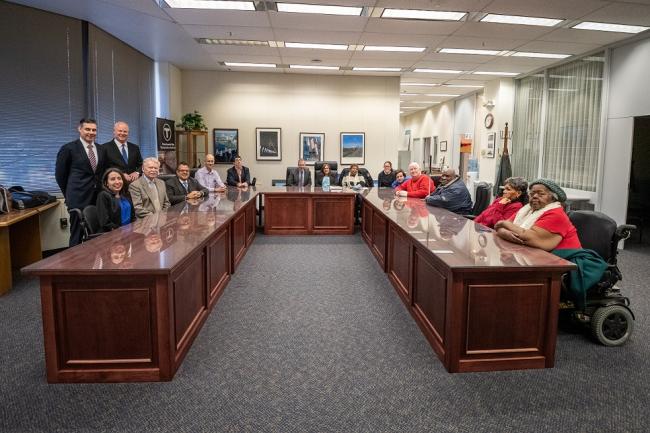
On December 4, 2018, the MBTA reaffirmed its commitment to fulfilling the Daniels-Finegold settlement by entering into an amended agreement that clarifies remaining work, outlines a plan for evaluating compliance, and defines obligations that will continue even after the end of the agreement.
Looking Beyond the Settlement
In our ongoing efforts to achieve full compliance with the settlement, a number of MBTA projects and programs are currently underway to help us build a system that’s fully accessible to all riders. To meet this goal, we're taking the following steps:
- Advancing our plan to make the system 100% accessible using priorities identified in the Plan for Accessible Transit Infrastructure (PATI)
- Investigating and implementing indoor wayfinding technologies to help riders who are blind or have low vision navigate the system
- Updating our accessibility training for all frontline employees, and making improvements based on experience and direct rider feedback
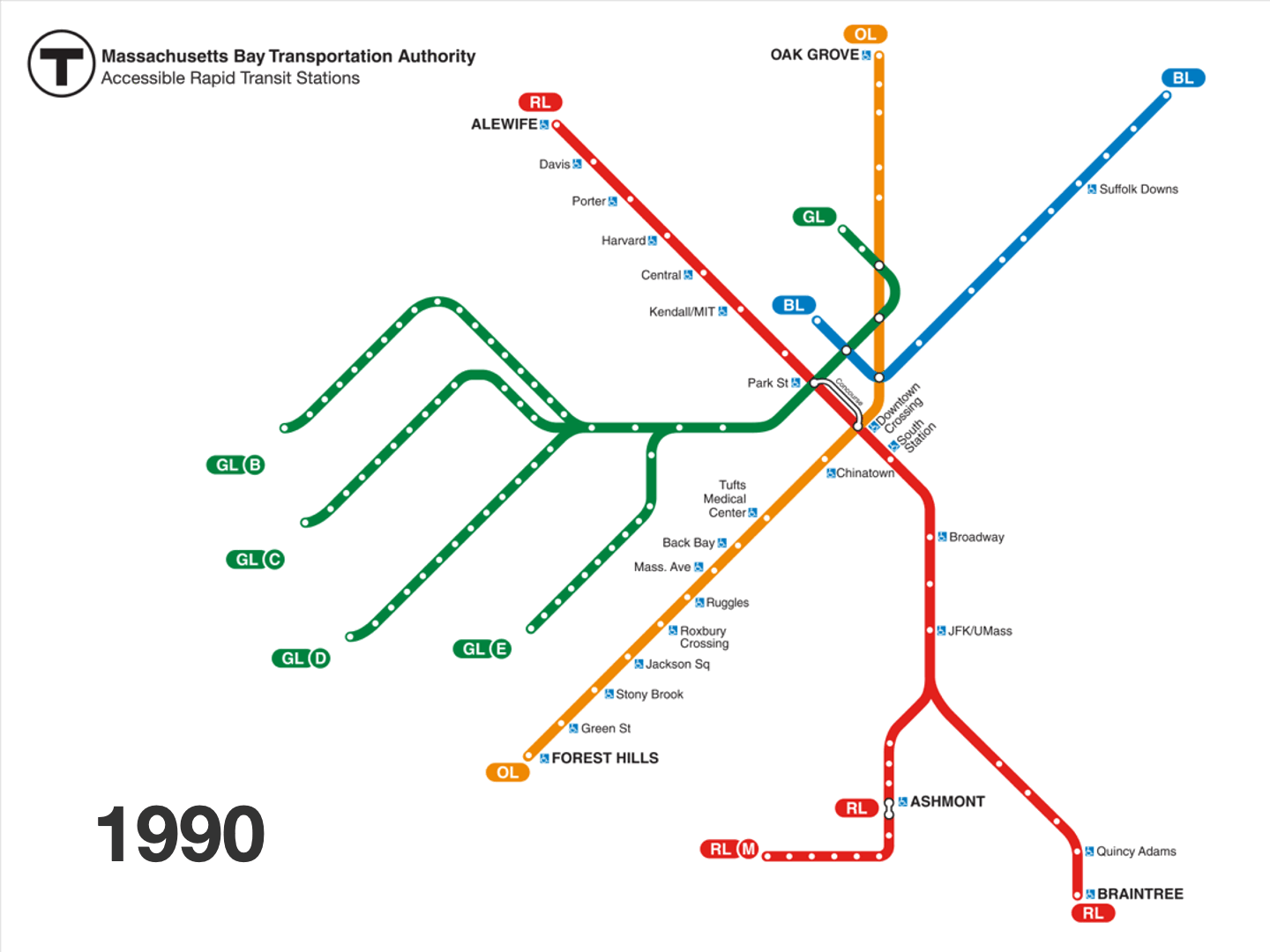
The MBTA system has changed substantially between 1990 and today. The majority of the system is now accessible, including the entirety of the Red, Orange, and Silver lines and the ferry network, almost all of the Blue Line, and major sections of the Green Line and Commuter Rail.
T Access Guides by Mode
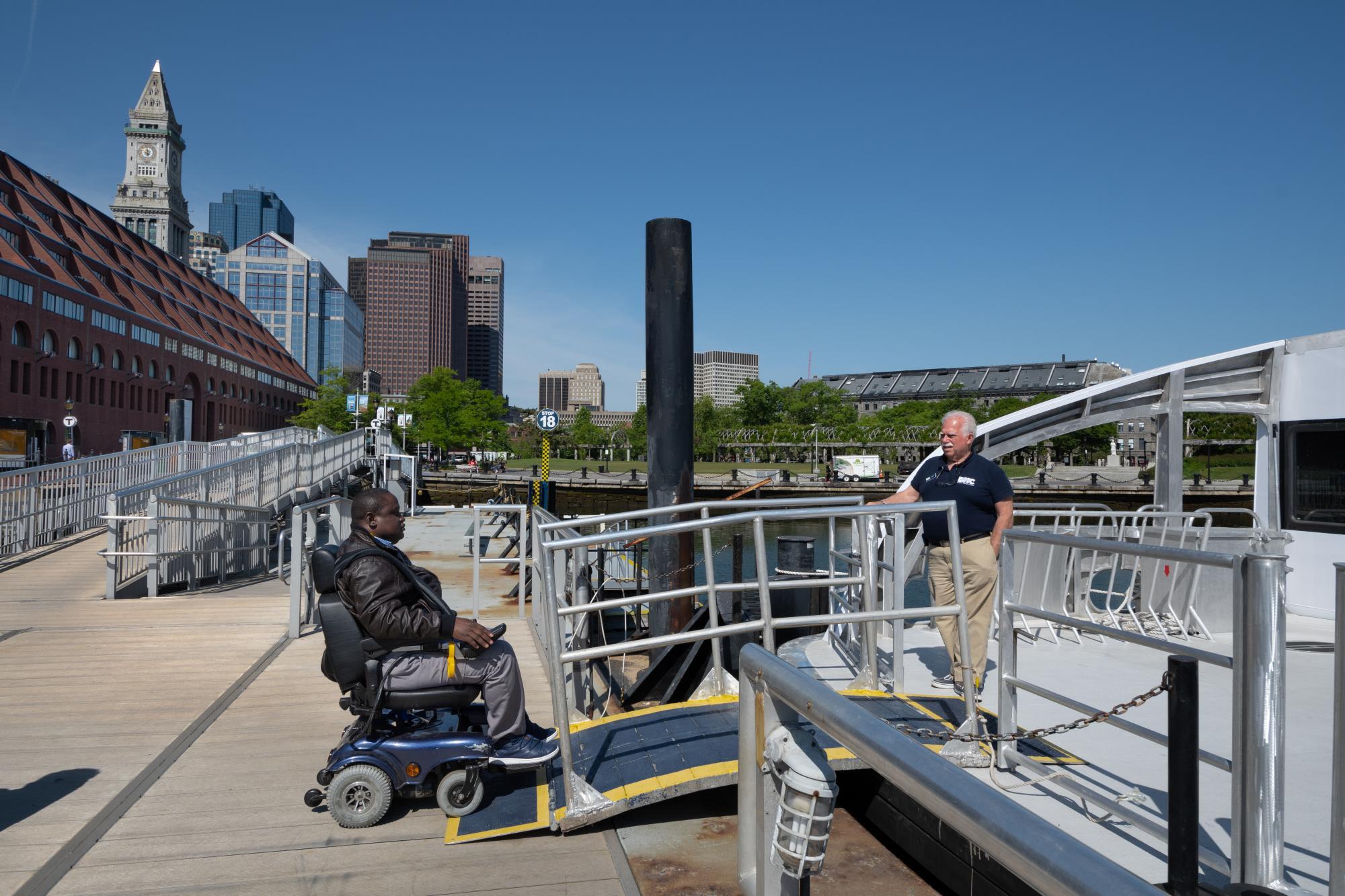
Much of the MBTA is accessible. Learn more about accessibility features on each mode of transit with our access guides.
History of the T
Accessibility on the MBTA
T Access Guides by Mode

Much of the MBTA is accessible. Learn more about accessibility features on each mode of transit with our access guides.
